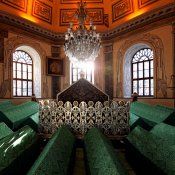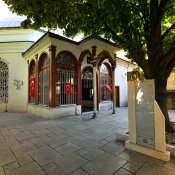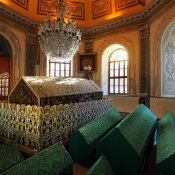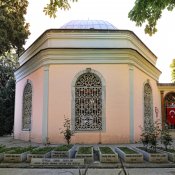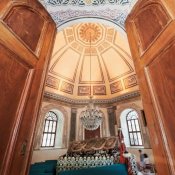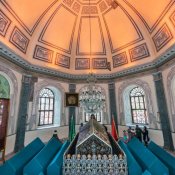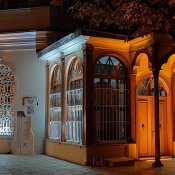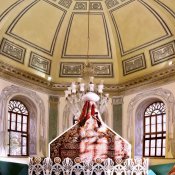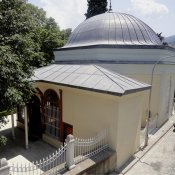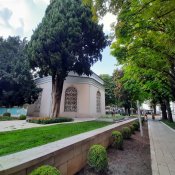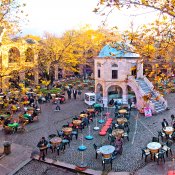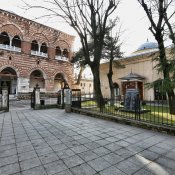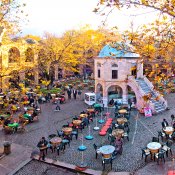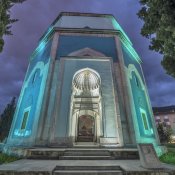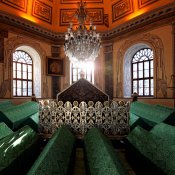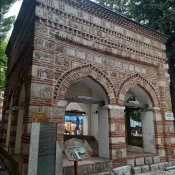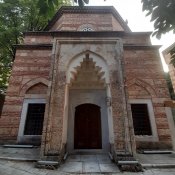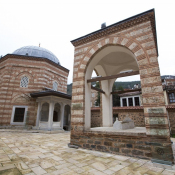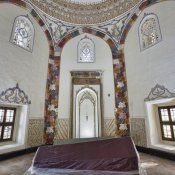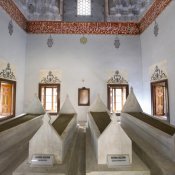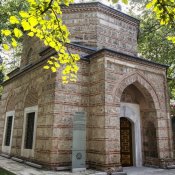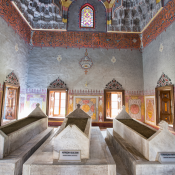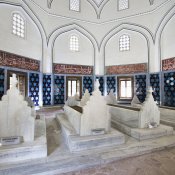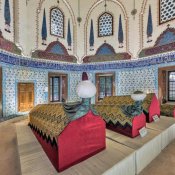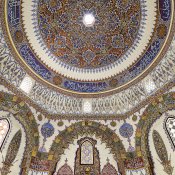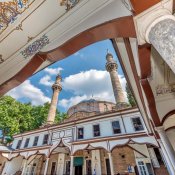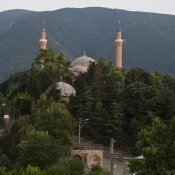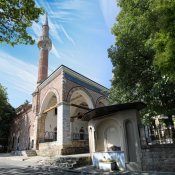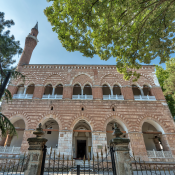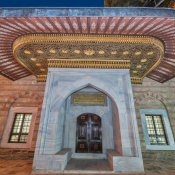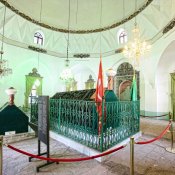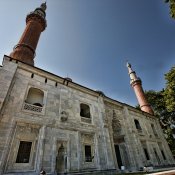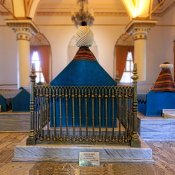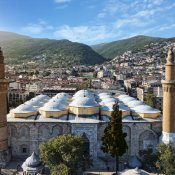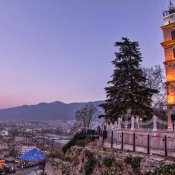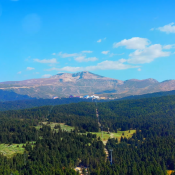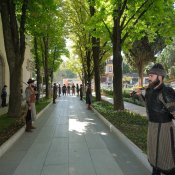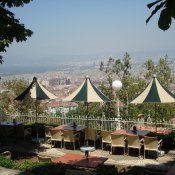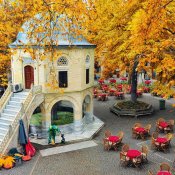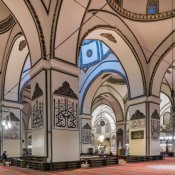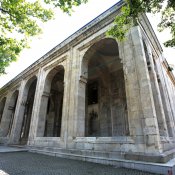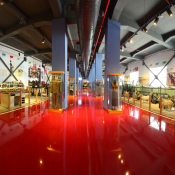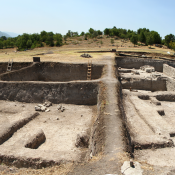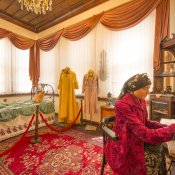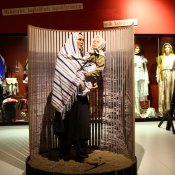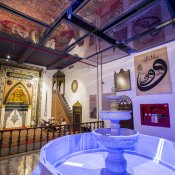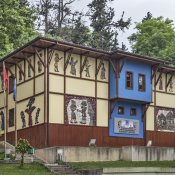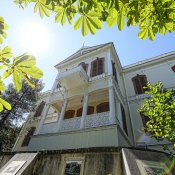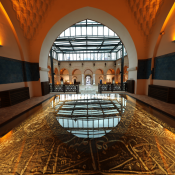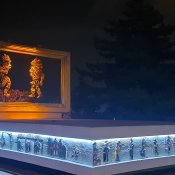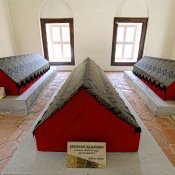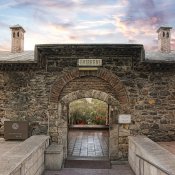Mausoleum of Osman Gazi
Mausoleum of Osman Gazi
Osman Gazi is the founder of the Ottoman Empire, who is the name-source for the Ottoman dynasty.
Orhan Bey buried his father, Osman Gazi (1258-1326), after the conquest of Bursa in 1326, inside a building called “Gümüşlü Kubbe”, the “Silver Dome”, fulfilling the his father's last will in doing so. This structure called the “Silver Dome” by Osman Gazi was a Byzantine chapel, whose lead-plated dome – seen from the far – was shining under the sun during the besieging of Bursa. This today’s structure, which shelters the tomb of Osman Gazi, is built where the place of the chapel of the St. Elias Monastery was situated, known to have been existing in this place in the 11th century. This chapel, converted into a mausoleum by the Ottomans, sustained major damage in the 1801 fire, and in the 1855 earthquake, respectively. In 1863, it was re-built by Sultan Abdulaziz.
This mausoleum being built on its old location, is built with an octagonal plan. It is covered with a dome, which sits on an octagonal tambour. . Its dome, the dome’s skirt, and the window pediments are decorated with 19th century hand-drawn ornaments.
The sarcophagus with its nacre marquetry on timber, in the centre of this mausoleum is the one of Osman Gazi. It is covered with a velvet fabric cover embroidered with gilded silver threads in the 19th century’s style. Among the 17 sarcophagi inside this mausoleum, there are also those of Alaaddin Bey, the son of Osman Gazi, of Asporça Hatun, the wife of Orhan Bey, and of İbrahim Bey, their son, as well as of Savcı Bey, the son of Murad I.
There are two works given as a gift to the mausoleum, the “Fatih” Verse, a board written by calligrapher Hakkı, and a tableau of “Bursa Yurdu”, with gilded silver on red atlas fabric.
This mausoleum was renovated in 1801, 1863, 2004, and in 2009.



